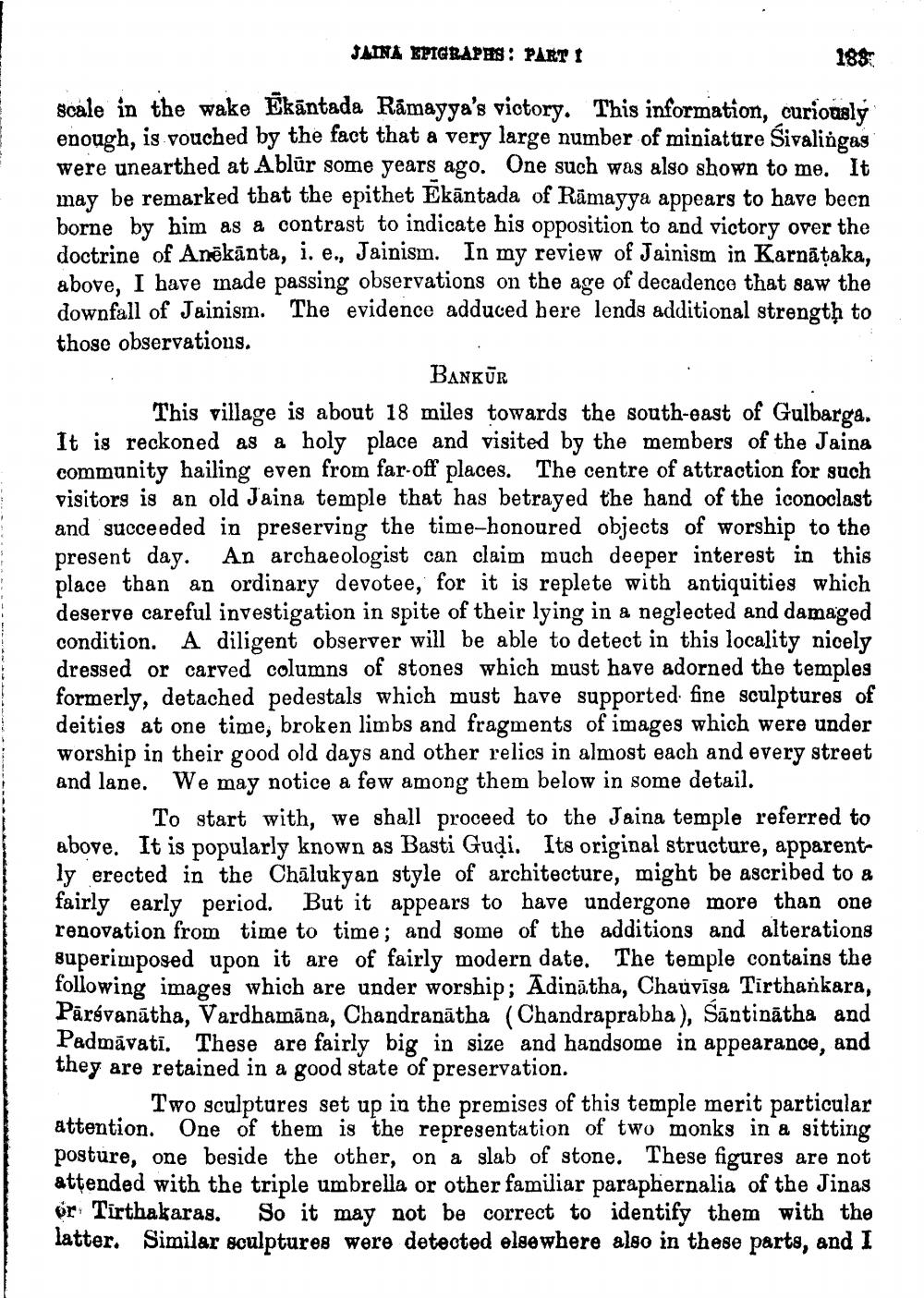________________
JAINA EPIGRAPHS: PART 1
188 scale in the wake Ekāntada Rāmayya's victory. This information, curiously enough, is vouched by the fact that a very large number of miniature Sivalingas were unearthed at Ablūr some years ago. One such was also shown to me. It may be remarked that the epithet Ekāntada of Rāmayya appears to have been borne by him as a contrast to indicate his opposition to and victory over the doctrine of Anēkānta, i. e., Jainism. In my review of Jainism in Karnātaka, above, I have made passing observations on the age of decadence that saw the downfall of Jainism. The evidence adduced bere lends additional strengtḥ to those observations.
Bankūr This village is about 18 miles towards the south-east of Gulbarga. It is reckoned as a holy place and visited by the members of the Jaina community hailing even from far-off places. The centre of attraction for such visitors is an old Jaina temple that has betrayed the hand of the iconoclast and succeeded in preserving the time-honoured objects of worship to the present day. An archaeologist can claim much deeper interest in this place than an ordinary devotee, for it is replete with antiquities which deserve careful investigation in spite of their lying in a neglected and damaged condition. A diligent observer will be able to detect in this locality nicely dressed or carved columns of stones which must have adorned the temples formerly, detached pedestals which must have supported fine sculptures of deities at one time, broken limbs and fragments of images which were under worship in their good old days and other relics in almost each and every street and lane. We may notice a few among them below in some detail.
To start with, we shall proceed to the Jaina temple referred to above. It is popularly known as Basti Gudi. Its original structure, apparently erected in the Chālukyan style of architecture, might be ascribed to a fairly early period. But it appears to have undergone more than one renovation from time to time; and some of the additions and alterations superimposed upon it are of fairly modern date. The temple contains the following images which are under worship; Adinātha, Chauvisa Tirthankara, Pārsvanātha, Vardhamāna, Chandranātha (Chandraprabha), Sāntinātha and Padmāvatī. These are fairly big in size and handsome in appearance, and they are retained in a good state of preservation.
Two sculptures set up in the premises of this temple merit particular attention. One of them is the representation of two monks in a sitting posture, one beside the other, on a slab of stone. These figures are not attended with the triple umbrella or other familiar paraphernalia of the Jinas or Tirthakaras. So it may not be correct to identify them with the latter. Similar sculptures were detected elsewhere also in these parts, and I




